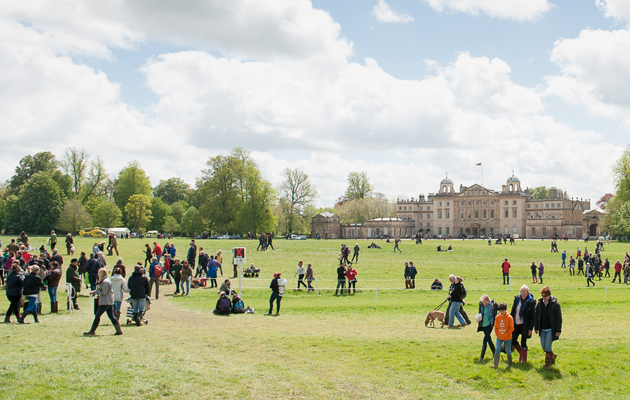If it hadn’t been for the coronavirus outbreak, we would be gearing up for Badminton Horse Trials, which was due to take place this week (6—10 May). So instead we will take a few trips down memory lane and delve into elements that make up the event. Here we trace the origins of the trophy given to the youngest British horse in the top echelons of the leader board
The Frank Weldon Memorial Challenge Trophy at the Mitsubishi Motors Badminton Horse Trials is given to the rider of “the youngest British-owned and -ridden horse placed in the top 12”.
This prize was given by the family of Colonel Frank Weldon — a former Badminton winner, director and course-designer — after his death in September 1993.
His son George says: “Father was interested in bringing on young horses, so we thought this trophy was appropriate. It would have been sad not to have a memorial to him as he was responsible for making the event what it is today.”
Frank Weldon became “a legend in his own lifetime” in eventing, in the words of Debby Sly, who wrote the excellent tome Badminton Horse Trials: The Triumphs and the Tears to celebrate the event’s 50th anniversary.
Frank was first associated with Badminton as a competitor. He ended up in Tetbury hospital with concussion and cracked ribs after a crashing fall on his first attempt with Liza Mandy in 1952.
But Frank returned, finishing second in 1953 and 1954 and winning in 1955 (when the event was the European Championships and held at Windsor at the invitation of The Queen) and 1956.
Frank’s mount in these triumphs was Kilbarry, who was bought to race as a five-year-old for £750. His rider’s ambition was to win the “Gunners’ Gold Cup” and Kilbarry won his first point-to-point. But he had to be hobdayed after suffering equine flu, which ended the horse’s racing career and resulted in Frank switching him to eventing.
Kilbarry broke his neck in at the Cottesbrook Horse Trials in 1957 when he was only 10. Frank was devastated and the tragedy informed his later work as a course-designer when he resolved always to make fences fair to horses, although they frightened the life out of riders — the seemingly straightforward fence Kilbarry fell at had an unseen solid rail behind the brush.
Frank won nine European medals in all, plus team gold and individual bronze at the 1956 Olympics on Kilbarry, and was captain of the British team for many years.
He retired from competition in 1962 and in 1964 was asked by the Duke of Beaufort if he would design the course for the following year’s Badminton. He was appointed director of the event in 1967 and his innovations ranged from roping fences so they could be quickly dismantled if a horse became stuck through to making the sport more commercial and attractive to spectators and sponsors. He retired from Badminton in 1988.
Article continues below…
You might also be interested in:

Badminton Horse Trials prizes: all about the Glentrool Trophy
FInd out about the Glentrool Trophy, given at Badminton Horse Trials to the horse who climbs the most places after

Badminton first-timers: Kate Honey and her self-produced star
Find out more about these Badminton debutantes and what they are hoping to achieve at their first go at this

Subscribe to Horse & Hound magazine today – and enjoy unlimited website access all year round
We continue to publish Horse & Hound magazine weekly during the coronavirus pandemic, as well as keeping horseandhound.co.uk up to date with all the breaking news, features and more. Click here for info about magazine subscriptions (six issues for £6) and access to our premium H&H Plus content online.




